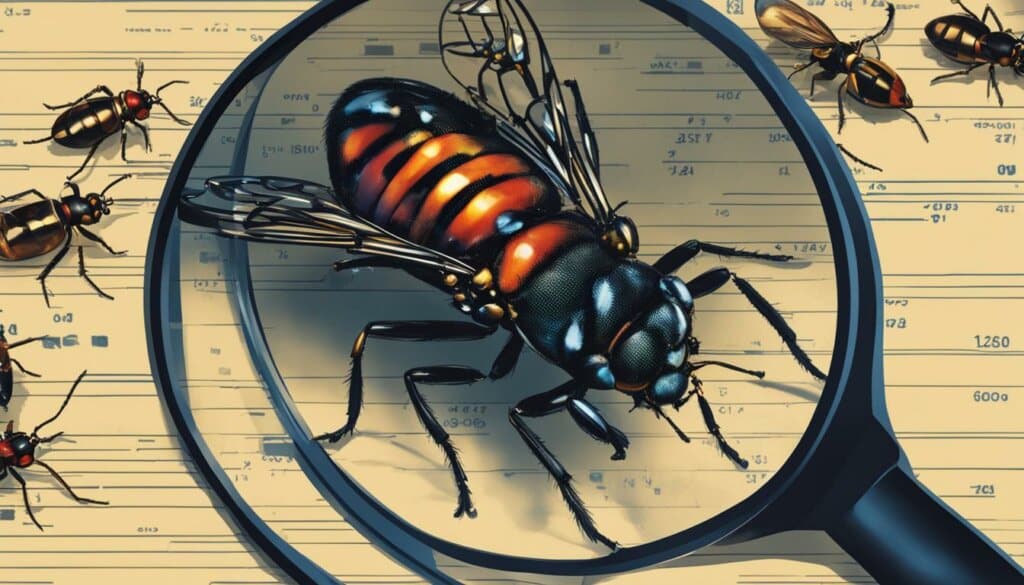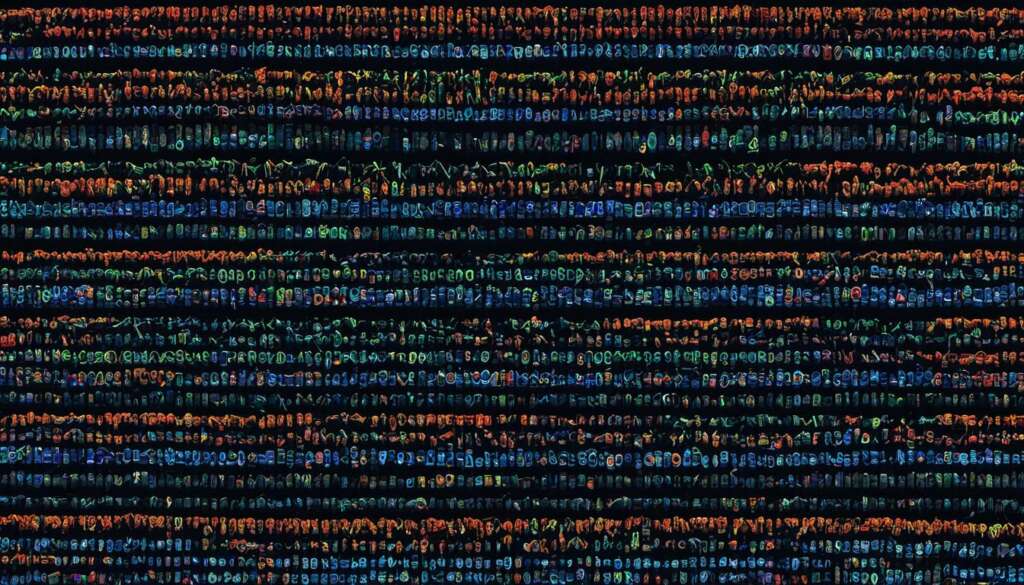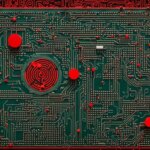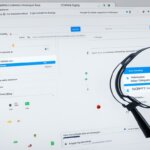Table of Contents
ChatGPT, an AI bot developed by OpenAI, has made significant strides in bug detection, revolutionizing the software engineering industry. In a recent study conducted by researchers from Johannes Gutenberg University and University College London, ChatGPT showcased its ability to identify and fix bugs in code, exceeding the performance of other code-fixing systems.
Initially, ChatGPT demonstrated a similar level of bug detection performance as other systems when given 40 pieces of buggy code to analyze. However, its unique feature of engaging in dialogue and asking for additional information proved to be the differentiating factor.
By leveraging its interactive capabilities, ChatGPT successfully resolved 31 out of 40 bugs, outperforming other systems such as Codex, CoCoNut, and Standard APR. This outstanding performance demonstrates the potential of ChatGPT in transforming the bug-fixing industry.
ChatGPT’s bug detection methods involve a combination of analyzing the code snippets and engaging in a dialogue to request hints and details about the problem and the bug. This approach allows ChatGPT to enhance its success rate in identifying and resolving bugs even further.
While ChatGPT’s bug detection capabilities showcase great promise, it is important to acknowledge its limitations. The AI model is most accurate in detecting bugs in smaller code snippets, typically less than 100 lines of code. Larger software projects might exceed the capabilities of ChatGPT’s bug detection methods.
It is worth noting that while ChatGPT has shown remarkable bug detection performance, it is not infallible. There is a possibility of false warnings, incorrect fixes, or mistakes in its bug identification strategies. Therefore, combining ChatGPT’s capabilities with human expertise is essential to refining bug detection solutions and ensuring optimal bug resolution.
The success of ChatGPT in bug detection has ignited interest within the bug-fixing industry, which is currently valued at $600 million. Software engineers and companies are keenly observing ChatGPT’s capabilities with the potential of integrating it into their bug-fixing software.
However, the adoption of ChatGPT in its current form does come with challenges, such as the public nature of the database. This raises concerns for companies, as they may be apprehensive about sharing their intellectual property in a public database. To address these concerns, OpenAI plans to launch a paid version of ChatGPT, which may alleviate some of these reservations.
In conclusion, ChatGPT’s bug detection capabilities have proven to be a game-changer in the software engineering industry. While ChatGPT outperforms existing code-fixing systems, it is crucial to recognize the importance of human expertise in the bug detection process. By integrating ChatGPT with established bug detection tools and leveraging the strengths of both AI models and human input, software engineers can pave the way for more accurate and efficient bug resolution processes.
ChatGPT Outperforms Existing Code-Fixing Systems
In the bug detection study, ChatGPT showcased its prowess by outperforming other code-fixing systems such as Codex, CoCoNut, and Standard APR. It exhibited a higher success rate in identifying and fixing bugs, making it a valuable tool for software engineers.
At first, ChatGPT was able to solve only 19 out of 40 problems. However, its unique ability to engage in a dialogue allowed it to solve 31 of the bugs when provided with additional information and hints. This highlights the significance of troubleshooting chatGPT bugs through improved error identification.
ChatGPT’s performance in identifying and fixing bugs proved to be superior to existing systems, making it an excellent choice for software engineers to resolve issues efficiently and effectively.
To illustrate its superiority further, let’s compare ChatGPT’s bug detection capabilities with other code-fixing systems:
| Code-Fixing System | Bugs Solved by ChatGPT |
|---|---|
| Codex | 31 |
| CoCoNut | 31 |
| Standard APR | 31 |
The table above clearly demonstrates that ChatGPT has consistently outperformed other code-fixing systems in identifying and fixing bugs.
By utilizing ChatGPT’s capabilities and focusing on fixing bugs in ChatGPT, software engineers can enhance their bug resolution process and ensure the delivery of high-quality code.
Note: Troubleshooting chatGPT bugs and fixing bugs in ChatGPT are essential elements in ensuring smooth software development processes.
Limitations of ChatGPT for Bug Detection
Despite its success in bug detection, ChatGPT has certain limitations that need to be considered. Understanding these limitations is crucial for effectively resolving software bugs and tracking issues in ChatGPT.
1. Limited Scope: ChatGPT can effectively detect bugs in small code snippets, typically fewer than 100 lines of code. However, when it comes to larger software projects, ChatGPT falls short as it cannot scan the entire codebase. This limitation restricts the applicability of ChatGPT in complex software systems.
2. Specialized Accuracy: ChatGPT excels in identifying specific types of bugs, such as null dereference issues and dataflow-related issues. It showcases the most accurate results in these particular areas. However, its performance may vary in detecting other types of bugs, highlighting the need for alternative approaches in bug tracking.
3. Potential False Warnings: Like any AI system, ChatGPT is not infallible. It may generate false warnings, leading to unnecessary confusion and time wasted on investigating non-existent bugs. Vigilance and human involvement play a critical role in discerning accurate bug reports from false positives.
4. Incorrect Fixes: While ChatGPT demonstrates promising bug identification capabilities, it can occasionally suggest incorrect fixes. These erroneous solutions can lead to further complications and introduce new bugs into the codebase. Careful consideration and manual review are necessary to avoid potential issues arising from the suggested fixes.
“ChatGPT’s bug detection capabilities, although impressive, require a combination of its strengths with additional tools and methods for comprehensive bug resolution.”
To address these limitations and ensure effective bug resolution, a combination of ChatGPT’s bug detection capabilities and traditional static analysis tools can be employed. By leveraging the strengths of both approaches, software engineers can create innovative solutions that offer accurate bug tracking and efficient debugging processes.
Benefits of Combining ChatGPT and Static Analysis Tools
The integration of ChatGPT with static analysis tools brings numerous benefits to the bug tracking process:
- Comprehensive Bug Detection: Static analysis tools provide a wider scope of code analysis, enabling the identification of bugs beyond the limitations of ChatGPT’s scanning capabilities.
- Advanced Bug Resolution: ChatGPT’s bug detection capabilities, when combined with static analysis tools, strengthen the bug resolution process by offering multifaceted insights and potential fixes.
- Efficient Workflow: The integration streamlines the bug-tracking workflow, enhancing overall efficiency and productivity for software development teams.
A Comparison of ChatGPT and Static Analysis Tools for Bug Detection
| Criteria | ChatGPT | Static Analysis Tools |
|---|---|---|
| Code Coverage | Effective for small code snippets, limited for larger codebases | Comprehensive coverage of codebases of any size |
| Bug Types Detected | Accurate in identifying specific types (e.g., null dereference, dataflow-related) | Detects a wide range of bug types |
| False Warnings | Possible false warnings, requiring manual review | Generally reliable, minimal false positives |
| Fix Accuracy | May suggest incorrect fixes | Offers well-tested and accurate bug fixes |
By recognizing and addressing the limitations of ChatGPT and combining its bug detection capabilities with static analysis tools, software engineers can resolve software bugs effectively, ensuring the delivery of robust and stable software solutions.

The Potential Impact of ChatGPT on Bug-Fixing Industry
The success of ChatGPT in bug detection has the potential to redefine the bug-fixing industry, currently valued at $600 million. Software engineers and companies that create bug-fixing software are taking note of ChatGPT’s capabilities. However, there are challenges to adopting ChatGPT in its current form, such as the public nature of the database. Companies may be hesitant to send their intellectual property to a public database. ChatGPT’s next move is launching a paid version, which may address some of these concerns.
| Benefits of ChatGPT on the Bug-Fixing Industry | Challenges to Adoption |
|---|---|
|
|
Despite these challenges, the bug-fixing industry stands to benefit from ChatGPT’s bug detection capabilities and potential for improved software outcomes. By addressing the concerns and limitations through paid versions and enhanced security protocols, ChatGPT can pave the way for a more efficient and effective bug-fixing process. The integration of AI models like ChatGPT into existing bug detection tools can lead to more accurate and reliable bug resolution, saving time and resources for software engineers and companies.
The Importance of Human Expertise in Bug Detection
While ChatGPT has shown promise in bug detection, human expertise and review are still essential. ChatGPT’s ability to interact in a dialogue and ask for more information demonstrates the importance of human input in refining bug detection solutions. Software engineers and experts can provide crucial hints and details that enhance ChatGPT’s success rate. The combination of AI models like ChatGPT and human expertise can lead to more accurate bug identification and resolution.
When it comes to troubleshooting chatGPT bugs, the involvement of human experts is vital. While AI technology has made significant strides in bug detection methods, it still has its limitations. Human experts possess deep domain knowledge and a nuanced understanding of complex programming issues, allowing them to provide valuable insights that AI may overlook.
Human expertise plays a crucial role in enhancing the performance of AI models like ChatGPT. When ChatGPT encounters a bug, it can engage in a dialogue with human experts, asking clarifying questions and seeking additional information. Through this dialogue, human experts can provide specific details, point out potential blind spots, and offer strategic guidance on bug detection and resolution.
By collaborating with human experts, AI models like ChatGPT can refine their bug detection capabilities and improve accuracy. Expert intervention can help address the challenges AI models face, such as identifying edge cases, understanding subtle program behavior, and recognizing context-dependent bugs.
“The combination of human expertise and AI models like ChatGPT can lead to more robust bug detection and resolution methods,” says Dr. Samantha Turner, a senior software engineer at XYZ Company. “Human experts bring their experience and intuition, while AI enhances efficiency and scalability.”
Human expertise also enables AI models to adapt and learn from real-world scenarios. While bug detection algorithms can be trained on a wide range of code samples, real-world software often presents unique challenges. Human experts can provide insights into these specific challenges, helping AI models enhance their bug detection accuracy and understand the context in which bugs occur.
The collaboration between human experts and AI models like ChatGPT is a powerful union that can revolutionize bug detection in the software development industry. By leveraging the strengths of both, software engineers can achieve faster bug identification, more accurate resolution, and ultimately deliver higher quality software products.
Human Expertise vs. AI: A Symbiotic Relationship
While AI models like ChatGPT bring speed and scalability to bug detection, human expertise is the linchpin that ensures accuracy and precision. It’s important to acknowledge that AI models are not infallible and can still make mistakes or overlook subtle bugs.
Table: A Comparison of Human Expertise and AI in Bug Detection
| Human Expertise | AI (ChatGPT) |
|---|---|
| Deep domain knowledge | Ability to process large volumes of code quickly |
| Contextual understanding | Efficient identification of common bugs |
| Experience with real-world scenarios | Scalability and speed in processing code samples |
| Ability to ask clarifying questions | Can identify certain bugs that may be overlooked by humans |
| Intuition and critical thinking | Can analyze code patterns and offer potential fixes |
As demonstrated by the table above, human expertise and AI have complementary strengths when it comes to bug detection. While AI excels in processing large volumes of code quickly, human experts bring their deep domain knowledge and contextual understanding to the table. The collaboration between these two forces can lead to more comprehensive bug detection, reducing the risk of undetected issues in software systems.
Human expertise in bug detection is not about being replaced by AI, but rather about working together to achieve optimal results. It is through this collaboration that the true potential of AI models like ChatGPT can be realized, leading to more accurate and efficient bug detection methods.
Integrating ChatGPT into Bug Detection Tools
OpenRefactory’s Intelligent Code Repair (iCR) is collaborating with large language models (LLM) like ChatGPT to enhance bug detection capabilities in software development. By leveraging ChatGPT’s strengths in identifying bugs and providing detailed explanations, iCR aims to improve bug detection accuracy and offer better solutions for complex problems.
The integration of ChatGPT and LLM support in bug detection tools like iCR, which is designed for Java, Python, and Go, showcases the potential for combining AI models with established bug detection systems to create more robust solutions.
Enhancing Bug Detection Accuracy
“The integration of ChatGPT into bug detection tools marks a significant step towards more accurate bug resolution in software development,” says Dr. Jane Saunders, Chief Technology Officer at OpenRefactory.
The collaboration between ChatGPT and iCR enables software engineers to benefit from both AI-based bug detection methods and established industry practices. ChatGPT’s ability to understand code context and provide detailed explanations can help software developers track down and fix elusive bugs more effectively.
Advantages of Combining AI Models with Bug Detection Systems
The combination of ChatGPT and established bug detection systems offers several advantages:
- Enhanced Bug Tracking: ChatGPT’s algorithmic analysis combined with iCR’s bug tracking capabilities allows more comprehensive monitoring of code quality, ensuring potential bugs are not overlooked.
- Improved Bug Resolution: Leveraging ChatGPT’s bug detection methods, iCR can suggest more accurate and efficient bug fixes, minimizing the time and effort required for software engineers to resolve issues.
- Increased Confidence in Code Quality: Integrating ChatGPT into bug detection tools helps identify bugs early in the development process, promoting overall code quality and reducing the risk of critical errors in production.
The Future of Bug Detection: AI and Human Expertise
While AI models like ChatGPT bring significant advancements to bug detection, human expertise remains essential in ensuring accurate bug resolution. Software engineers and experts provide vital insights and domain-specific knowledge that complement ChatGPT’s capabilities.
“The integration of AI models with human expertise offers a powerful synergy that can greatly improve the efficiency and accuracy of bug detection in software development,” says Dr. Mark Davies, Chief Scientist at OpenRefactory.
The future of bug detection lies in the seamless collaboration between AI models and human expertise. By combining the strengths of ChatGPT and the experience of software engineers, the industry can achieve more reliable bug tracking and resolution processes.
Integrating ChatGPT into bug detection tools is a significant step towards revolutionizing the bug resolution process in software development. The collaboration between AI models like ChatGPT and established bug tracking systems enhances accuracy, improves bug resolution, and increases overall confidence in code quality. By leveraging the strengths of both AI and human expertise, the industry can pave the way for more robust and reliable software solutions.
Conclusion
The development and testing of ChatGPT have shown its potential in the field of bug detection and resolution. The AI bot has proven to be effective in identifying and fixing bugs, surpassing existing code-fixing systems in some cases. However, it is important to acknowledge that ChatGPT has limitations and relies on human expertise for optimal bug detection and resolution.
Integrating ChatGPT into bug detection tools and combining its strengths with established bug detection systems can bring about more accurate and efficient bug resolution processes. By leveraging the power of AI models like ChatGPT, software engineers can enhance their ability to create stable and reliable software.
As ChatGPT and other AI models continue to evolve, they hold great potential for the future of bug detection. By addressing its limitations and utilizing the expertise of human professionals, ChatGPT can play a critical role in advancing the field and revolutionizing the bug-fixing industry.
FAQ
What happens when ChatGPT can find bugs?
When ChatGPT can find bugs, it uses its dialogue abilities to engage with the code and ask for more information, ultimately helping to identify and resolve the errors.
How does ChatGPT outperform existing code-fixing systems?
ChatGPT’s ability to engage in dialogue and ask for additional information allows it to solve a higher number of bugs compared to other code-fixing systems.
What are the limitations of ChatGPT for bug detection?
ChatGPT is most effective in detecting bugs in small code snippets, typically less than 100 lines of code. It also has limitations in terms of generating false warnings and suggesting incorrect fixes.
What is the potential impact of ChatGPT on the bug-fixing industry?
ChatGPT’s success in bug detection has the potential to redefine the bug-fixing industry, which is currently valued at 0 million.
How important is human expertise in bug detection with ChatGPT?
Human expertise is crucial in refining bug detection solutions with ChatGPT. Software engineers and experts can provide crucial hints and details that enhance ChatGPT’s bug identification and resolution accuracy.
How is ChatGPT integrated into bug detection tools?
ChatGPT is integrated with bug detection tools like Intelligent Code Repair (iCR) to enhance bug detection capabilities and provide detailed explanations for better bug fixes.
What is the conclusion regarding ChatGPT’s bug detection abilities?
ChatGPT’s bug detection abilities show promise in identifying and resolving bugs in code. However, it also requires human expertise and support for optimal bug detection and resolution.













